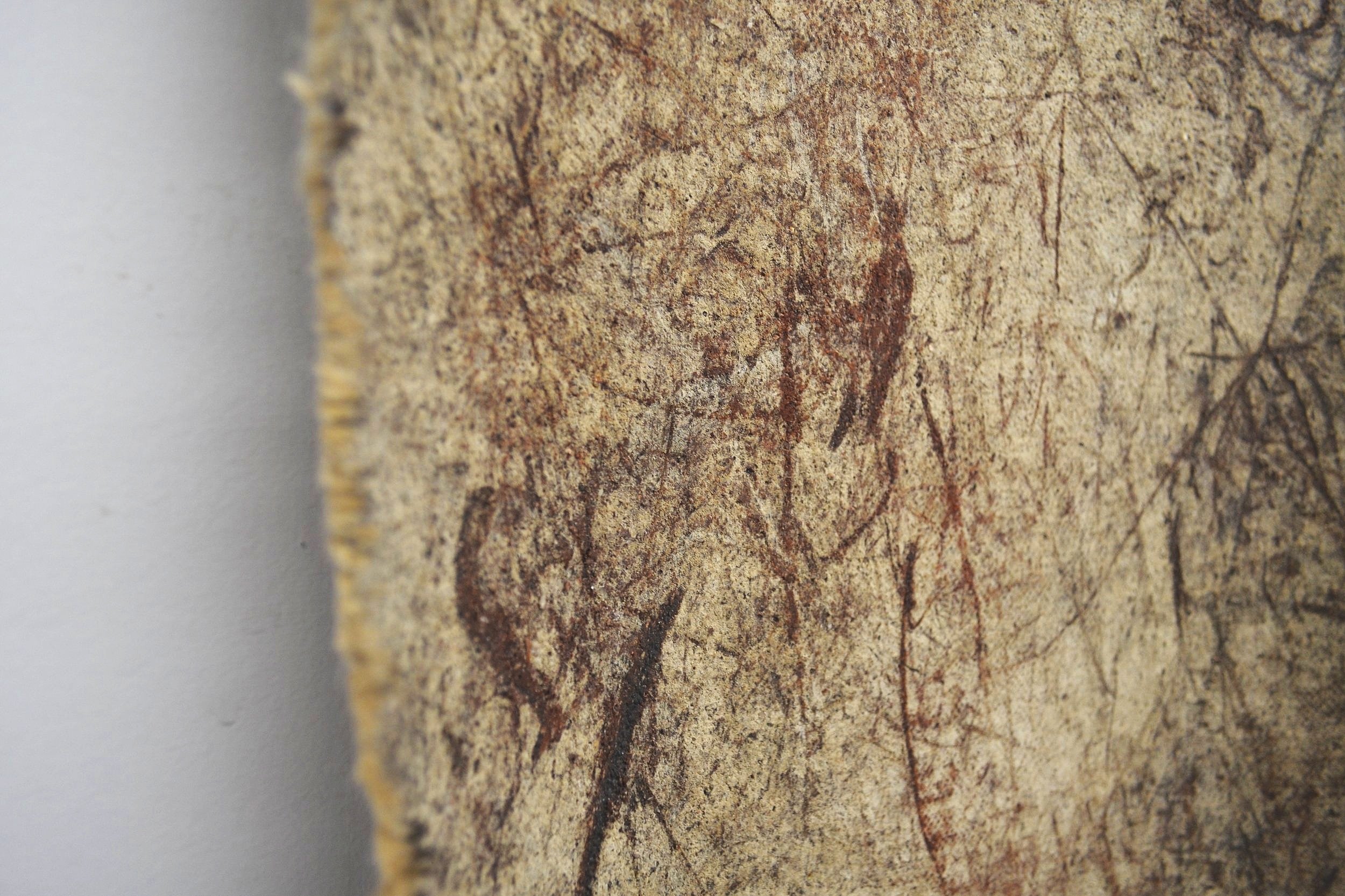Earth Pigments and the Language of the Land
Detail of Tapestry 5
What if the most unusual pigments weren't made in a lab but found beneath our feet? Humans have turned to the earth for color for millennia, from the ochre handprints in ancient caves to the rich earth tones of Renaissance masterpieces; I'm drawn to the earth, scouring riverbanks and construction sites for the raw materials for color. I collect, refine, and transform raw earth into pigments. From ditch to painting, here's a look inside my process.
Fine red clay
I'm drawn to riverbanks, where the water has carved through soil layers, revealing ochre, umber, sienna streaks, grey greens, and occasionally rich earthy violet tones. I especially like looking in newly dug ditches or vernal creeks after rain; the fine clay, often cracked into cakes in the sun, takes less refining. I collect bags of the finest particulate and pack them into my backpack, which is usually heavy on the hike back.
Raw foraged clay
Back in my studio, I begin refining the collected earth. First, the soil is dried and spread out on trays. Then comes the task of separating the pigment from the larger particles, plant matter, and grit. I first place all the prospective pigment into a bucket of water and let it sit overnight. In the morning, I put a lid on and shake the bucket, then wait 5 seconds and pour off the water. Rinse and repeat. This process is known as slaking; the larger particles fall out of the solution much faster than fine particles - by shaking the water and clay together and waiting 5 seconds, I give the large particles and grit time to settle to the bottom before I pour off the water containing the fine particles used for pigment. After repeating this process several times, I leave the bucket of refined clay to settle overnight and pour off the clear water in the morning. At this time, the clay should resemble a potter’s slip. I lay the clay on a smooth, flat surface and let it dry completely. I then grind the pigment chunks in a mortar and pestle to break up chunks and refine them. This repetitive work is meditative; depending on the specific clay and the desired effect, this process can take days or weeks. Once just dirt, these pigments will eventually find their way into my paintings, especially the Trace series, lending a depth and velvety luminosity that no synthetic color can replicate.
Spore, 2017, Oil and wood ash on hemp, 40” x 30”
To turn these pigments into paint, I do something unusual - I mix the pigment in a mortar and pestle (instead of a paint muller) with a small amount of a 50 - 50 ratio of linseed oil and stand oil for a bit of stickiness. I want the paint to be a bit wetter than store-bought paint. I spread a thin layer on a panel or linen canvas - enough to eliminate the white primer. I let the paint sit for a few days till it becomes tacky and repeat with a contrasting color in a slightly dry paint so that they may crack and incised marks are easy to make. These paintings take ages to dry - sometimes, they kick around my tiny studio, where they naturally gather more marks. When Im doing work on-site, I take them on hikes with me - twigs and branches scratching the paint the whole way. Most paintings don’t look intentional on the first pass, so I reuse the canvas or panels and repeat the process until they work.
Unlike my Trace series, landscapes and oil paintings like Spore use more conventional materials and methods, even if I mix in some hand-made paint or ash. These slow, deliberate processes counterpoint the fast pace of modern life, a way to connect with the earth's rhythms and find stillness within the work.




